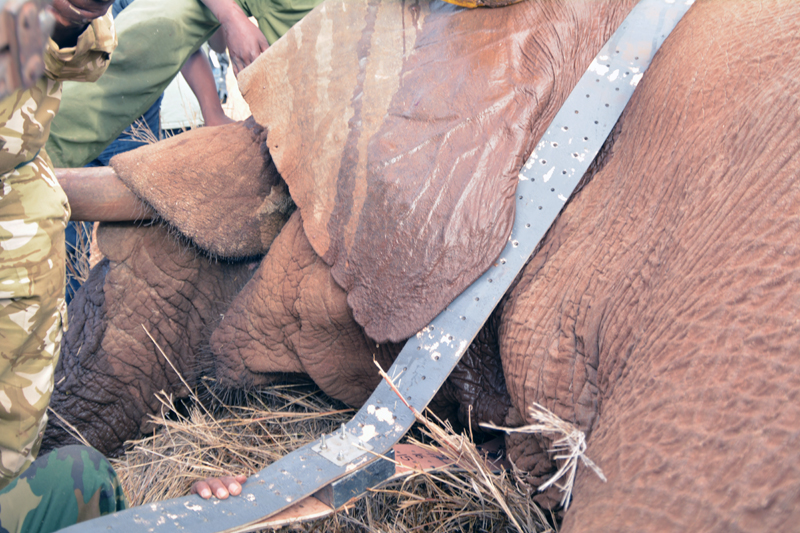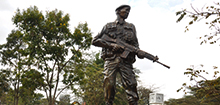
Date Published:
Two elephants in the Amboseli ecosystem have been fitted with tracking collars. The collars transmit a satellite and radio signal using global positioning system (GPS) technology to map out the elephants’ migratory routes and identify how expansively the elephants travel in search of water and vegetation. The fitting of collars was conducted by a team of scientists, researchers and veterinarians from the Kenya Wildlife Service (KWS) in collaboration with the International Fund for Animal Welfare (IFAW).
“Elephants need space and resources in order to be free, viable and to fulfill the flagship role they play in the environment in this region. Seen in human terms, the information we gather will give us an elephant’s eye view of optimum lifestyle standards for these giant creatures,” said Azzedine Downes President and CEO IFAW. “We will be able to make a case for the connection of their favored habitats by securing critical corridors and securing the areas that are essential for sustaining Amboseli’s rich wildlife heritage, especially the elephants.”
More than 1,400 elephants live in the Amboseli ecosystem, spending 80 per cent of their time outside Amboseli National Park. Since 2012, IFAW in conjunction with KWS has collared 12 elephants in Amboseli. The information gleaned from the 12 collars indicates that the elephants have traversed over 17,000 square kilometers from Magadi and Suswa in the west to Tsavo West in the east. Some elephants, particularly the males, have also been seen to cross the Kenyan border with Tanzania. The findings also indicate that some of the collared elephants have been identified to frequent and forage close to electrically fenced farmlands showing that collaring can be an effective tool to monitor the movement of crop raiding animals and help put an early warning mechanism to reduce conflicts associated with crop raids.
Sospeter Kiambi, the Elephant Program Coordinator at KWS noted that, “In addition to understanding the spatial and temporal habitat utilization by elephants from satellite collars, advancement in technology has allowed the use of satellite collar information to improve on elephant law enforcement, through immobility alerts and geo-fencing. Applying these new technologies gives wildlife managers an edge over poachers and human elephant conflict (HEC) which is increasingly getting critical to the conservation of elephant in the Amboseli ecosystem.”
The IFAW-KWS study is part of IFAW’s Amboseli Project, which includes enhancing KWS’ law enforcement capabilities, leasing critical corridors and dispersal areas in community land, creating conservation awareness and local capacity for ecotourism ventures, and mitigating human-elephant conflict.





